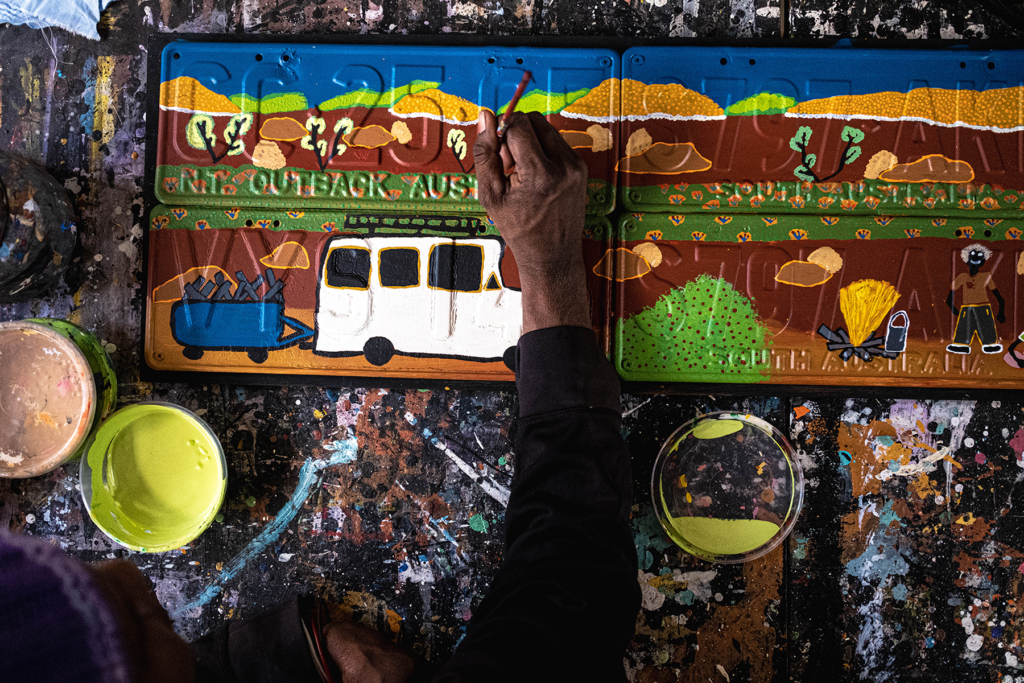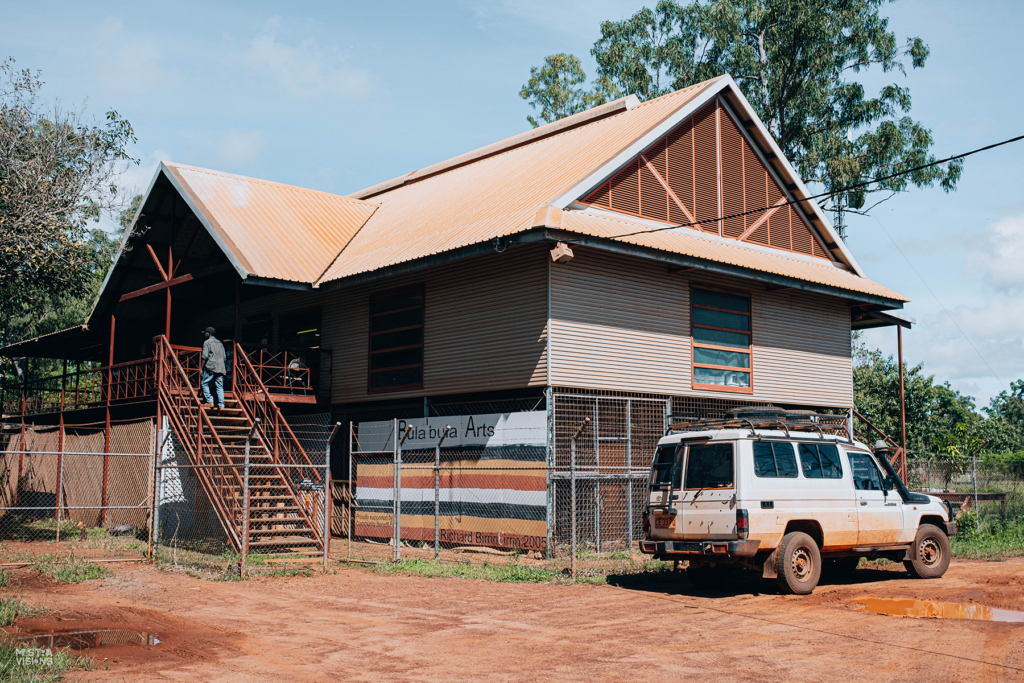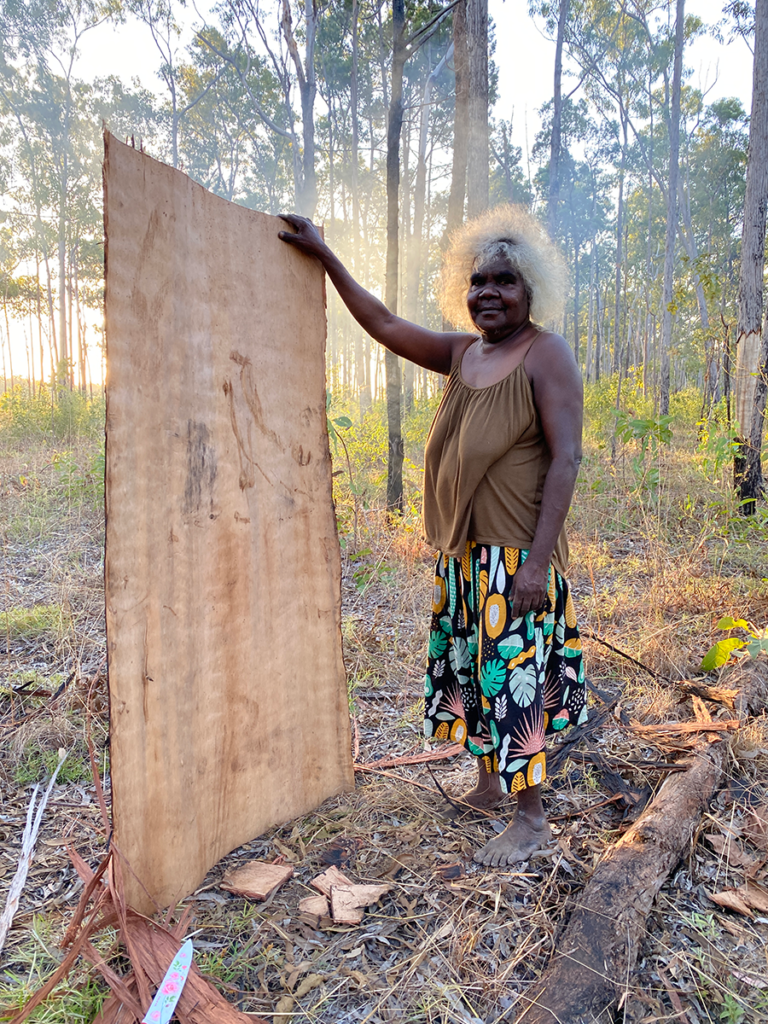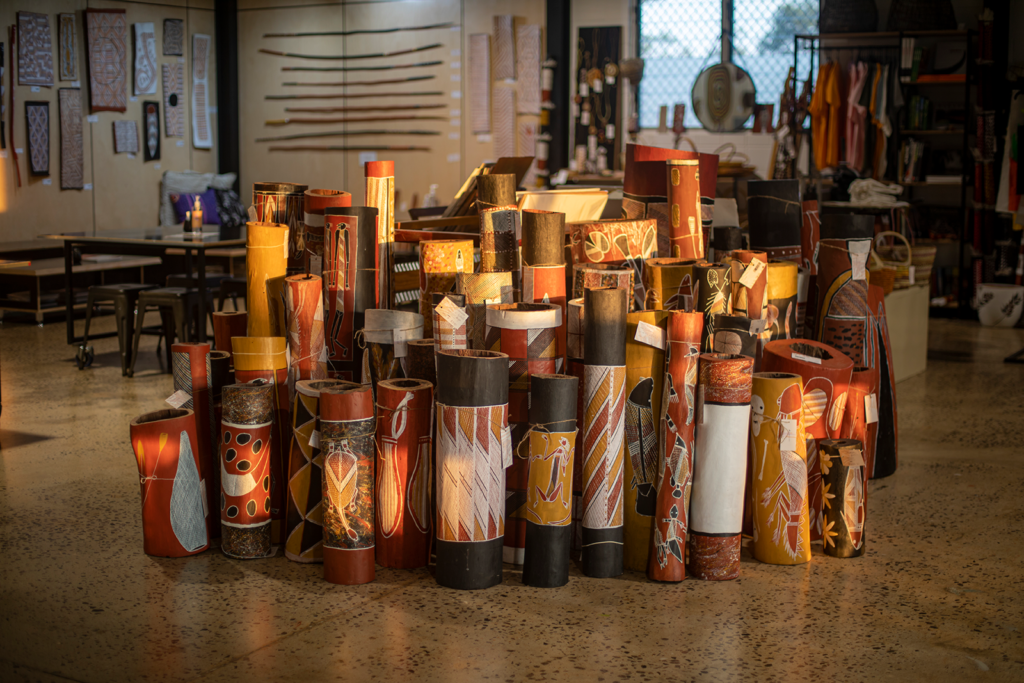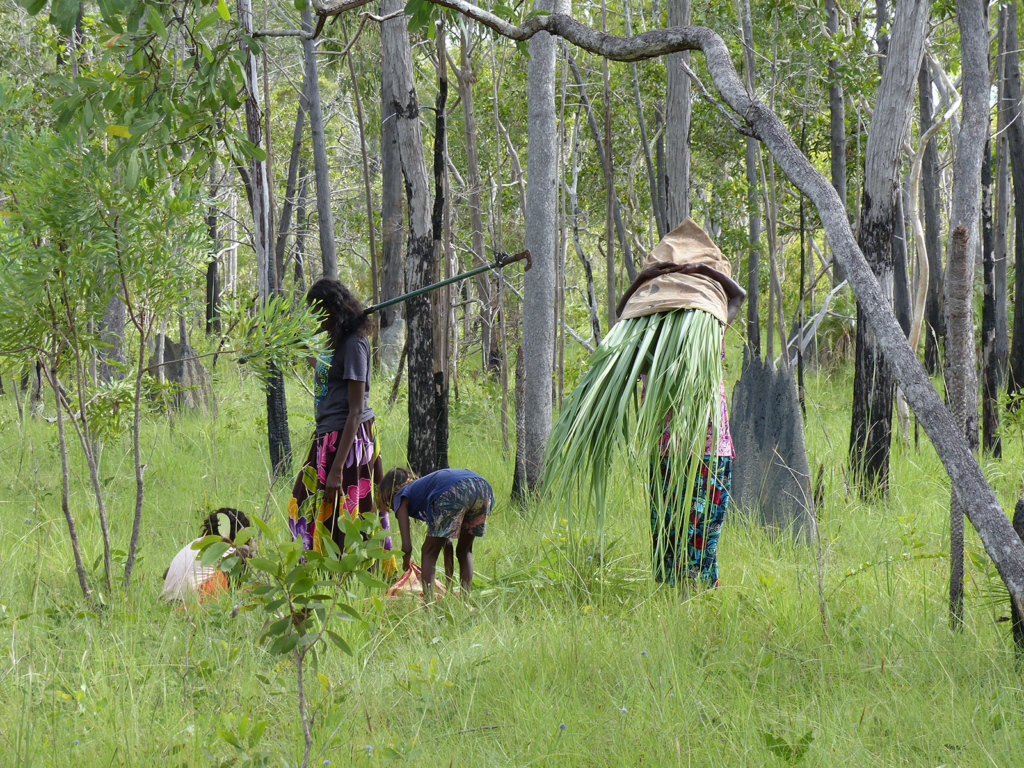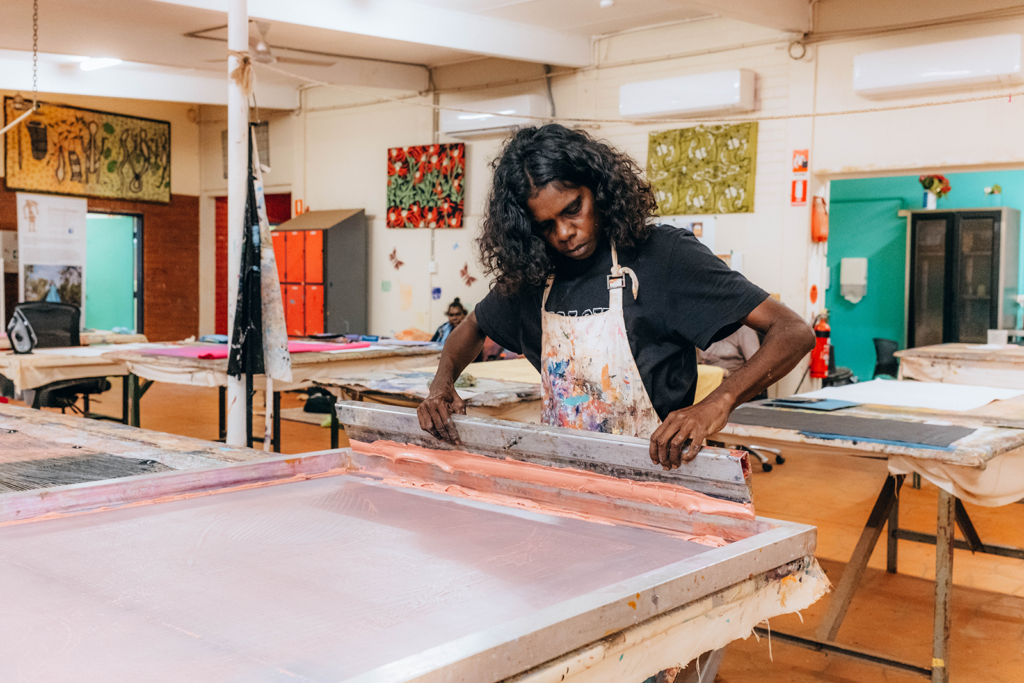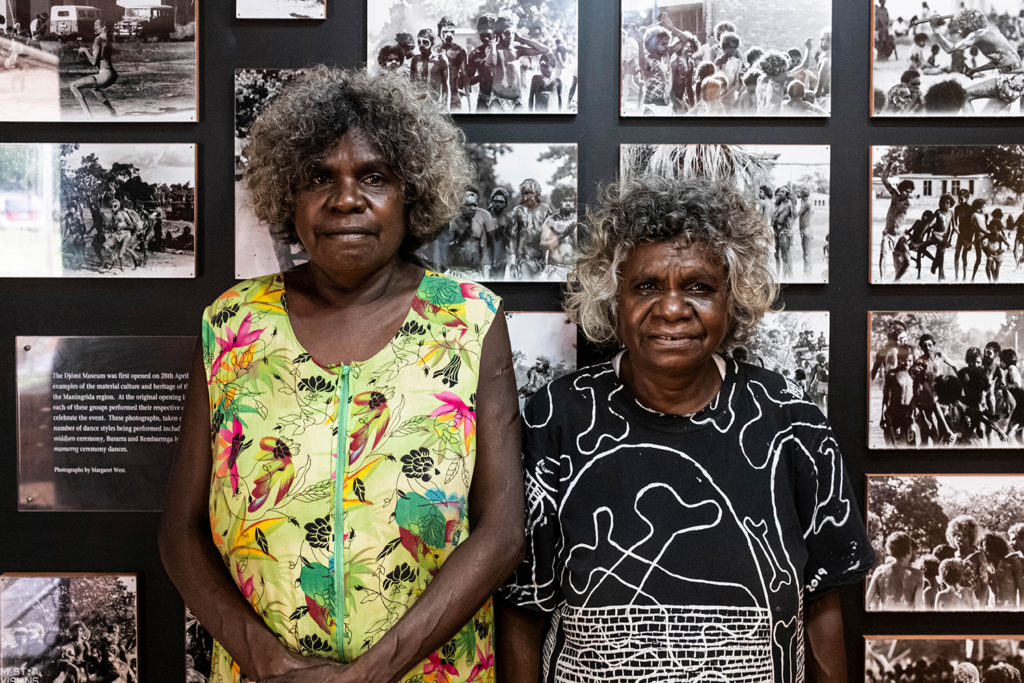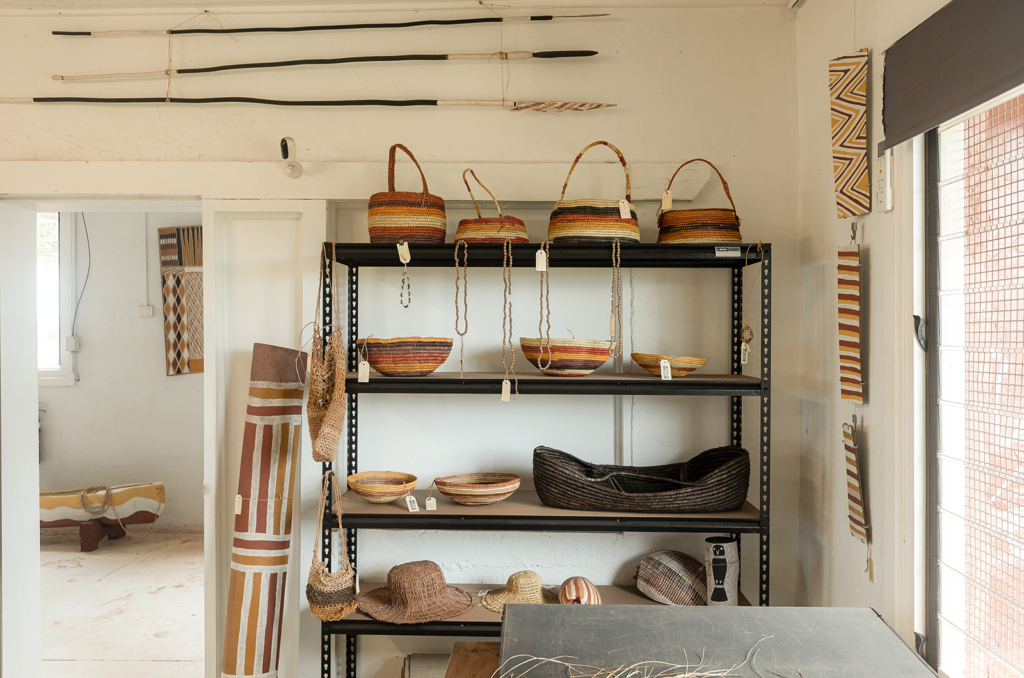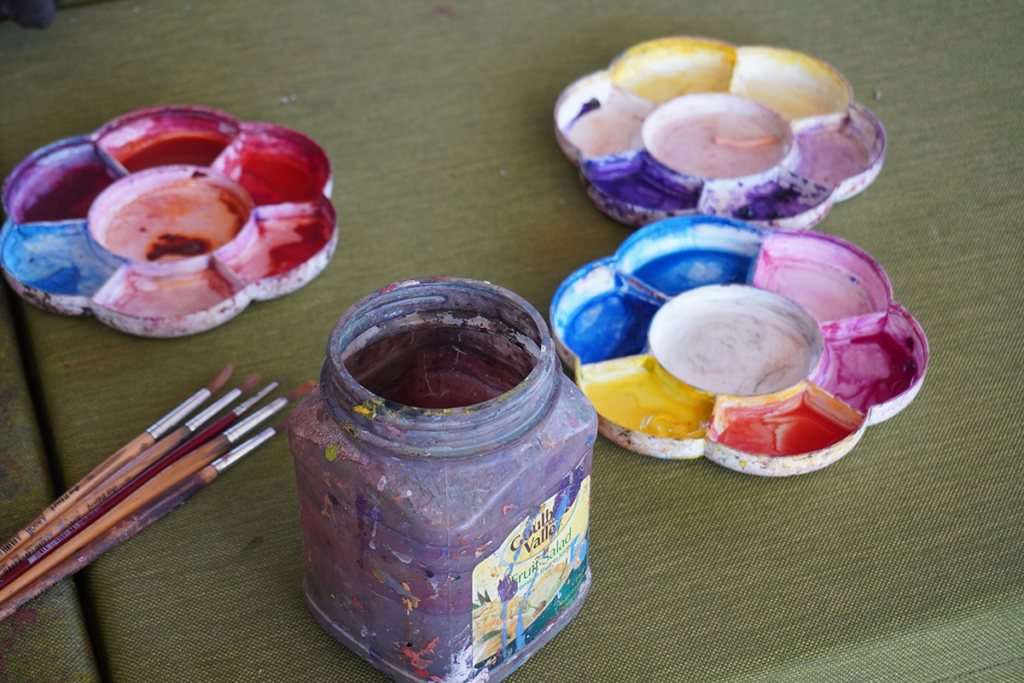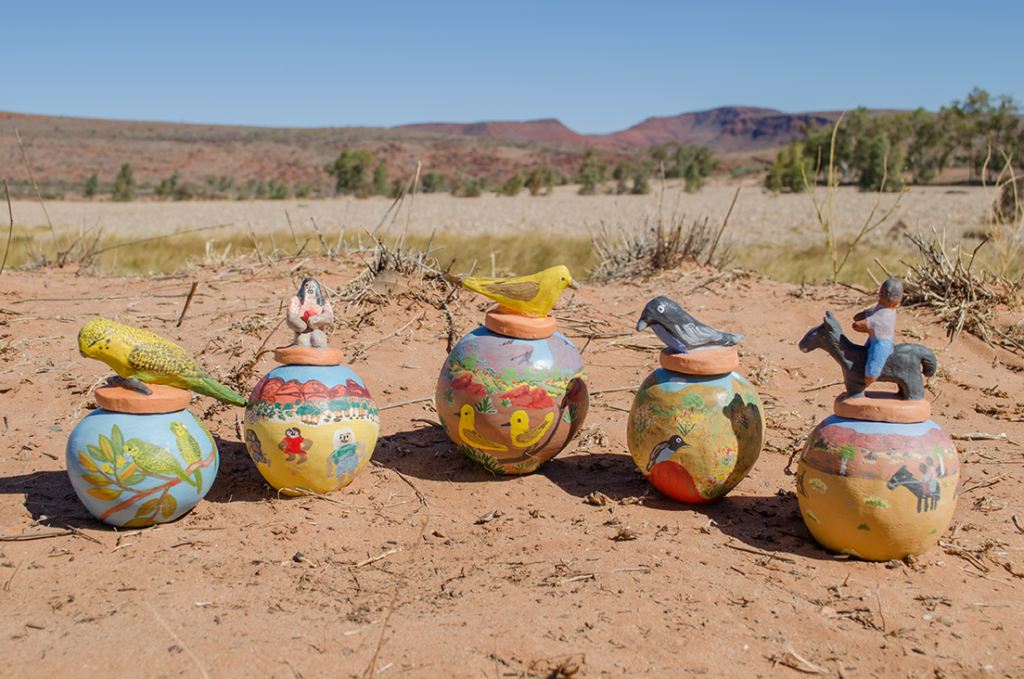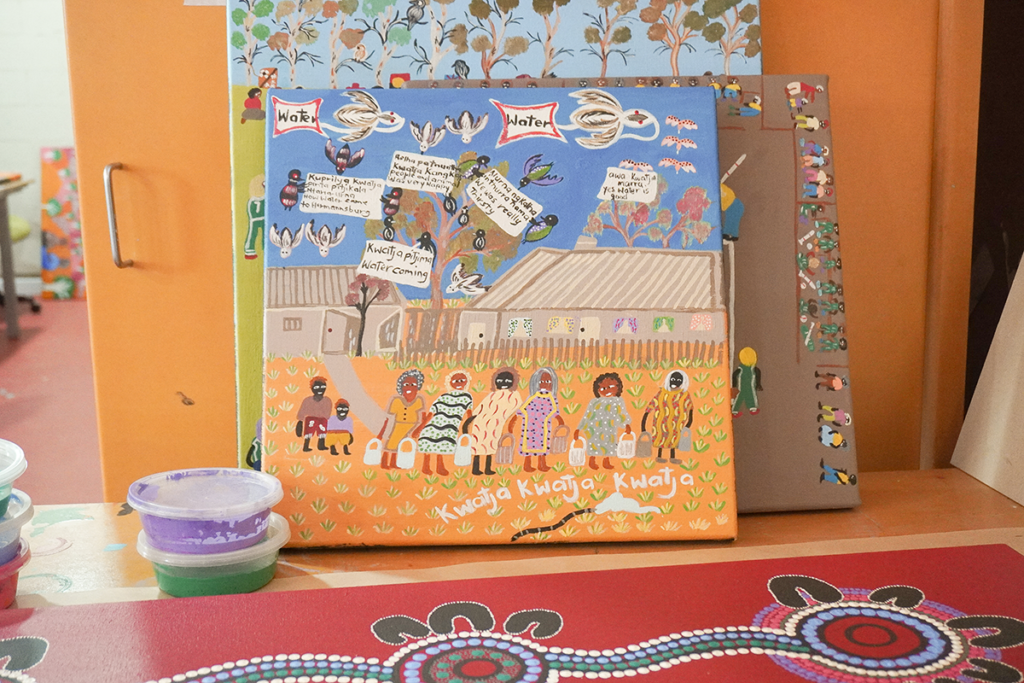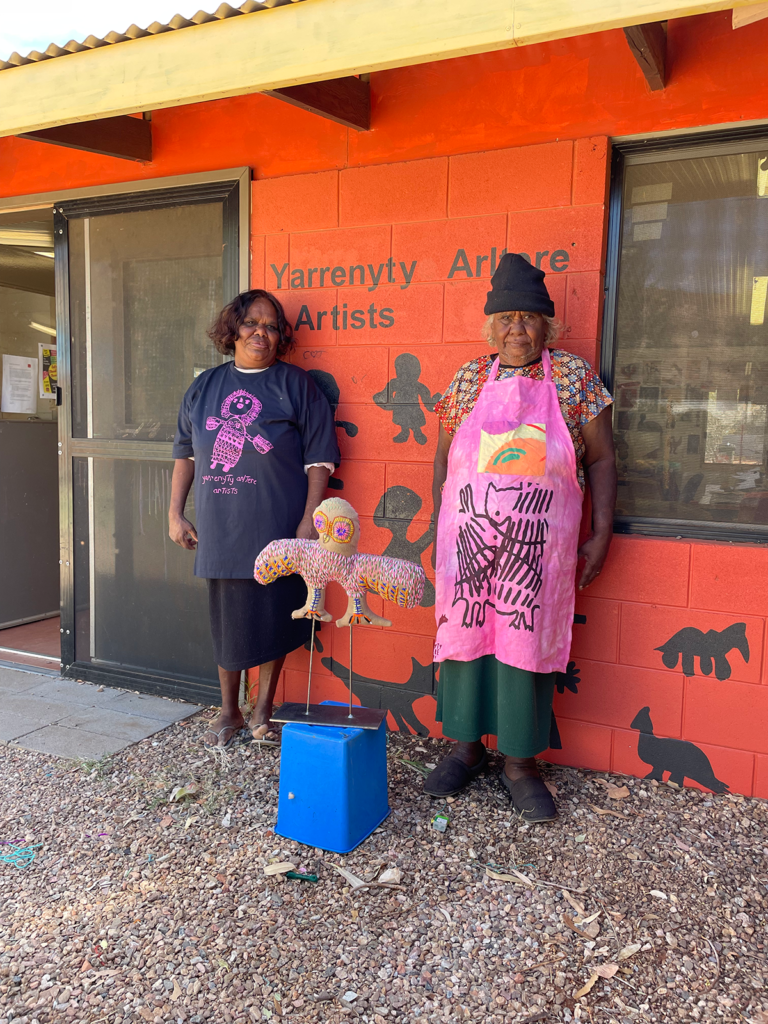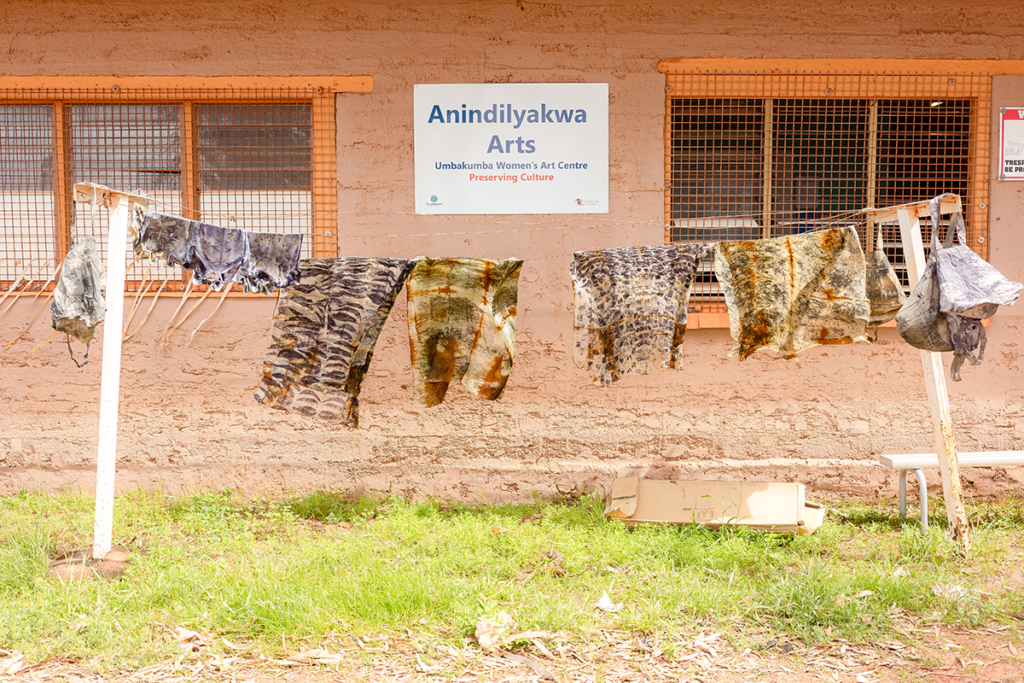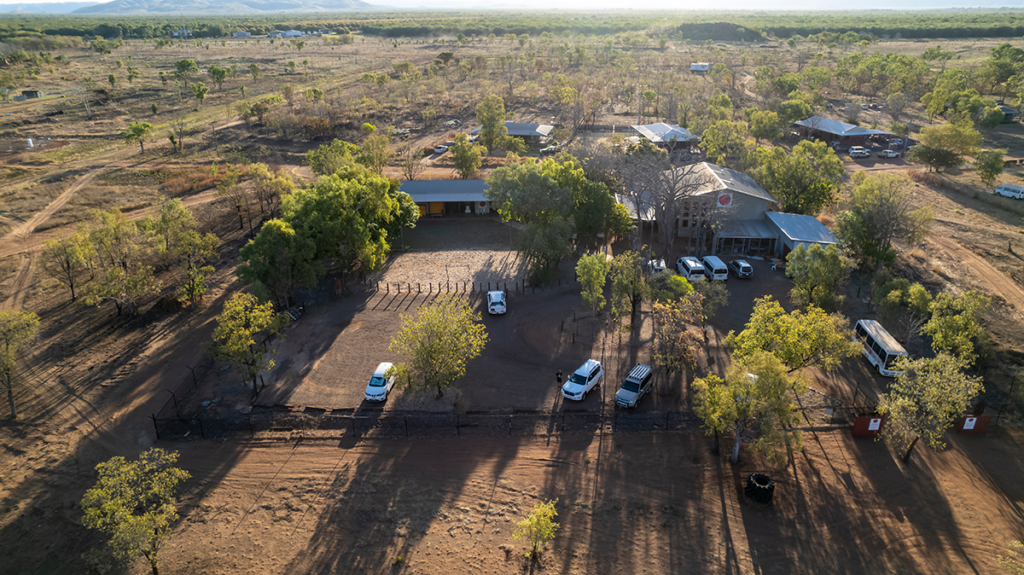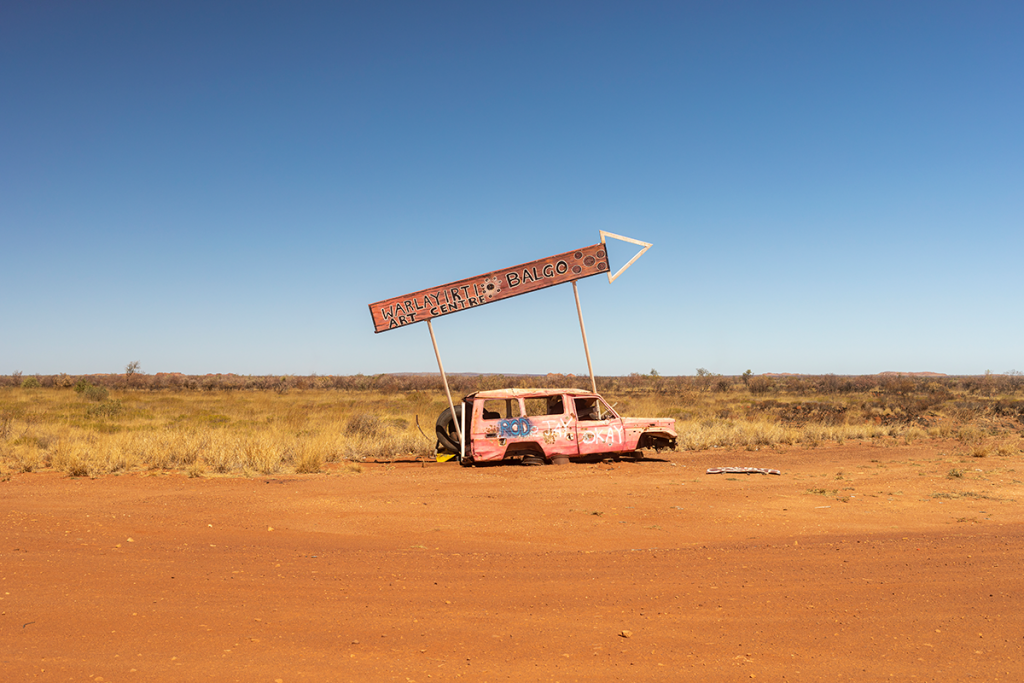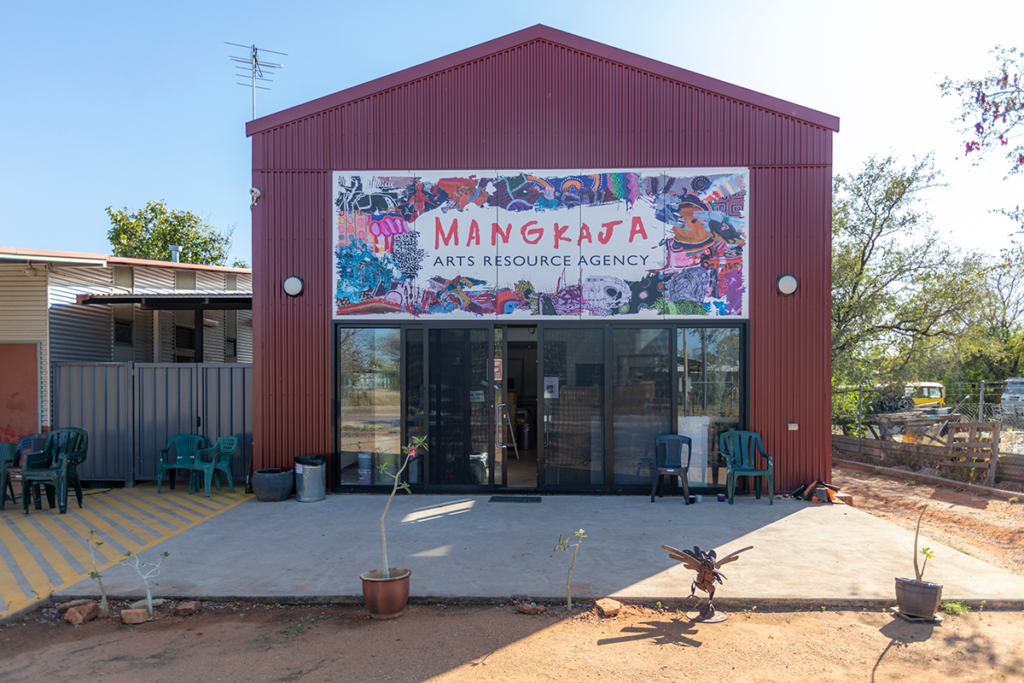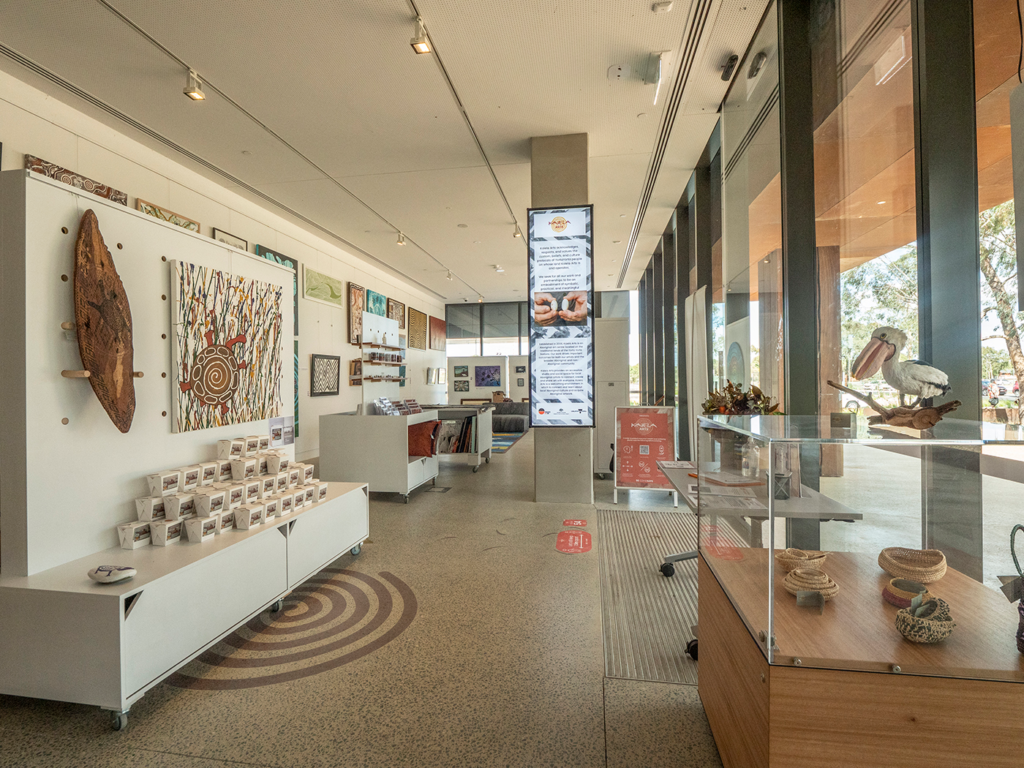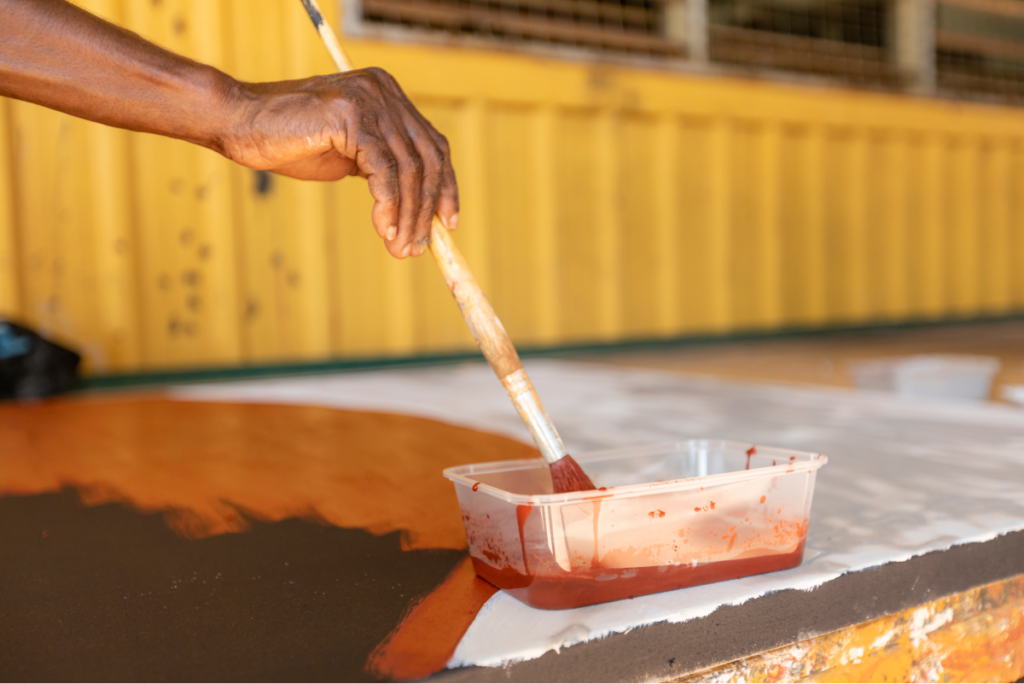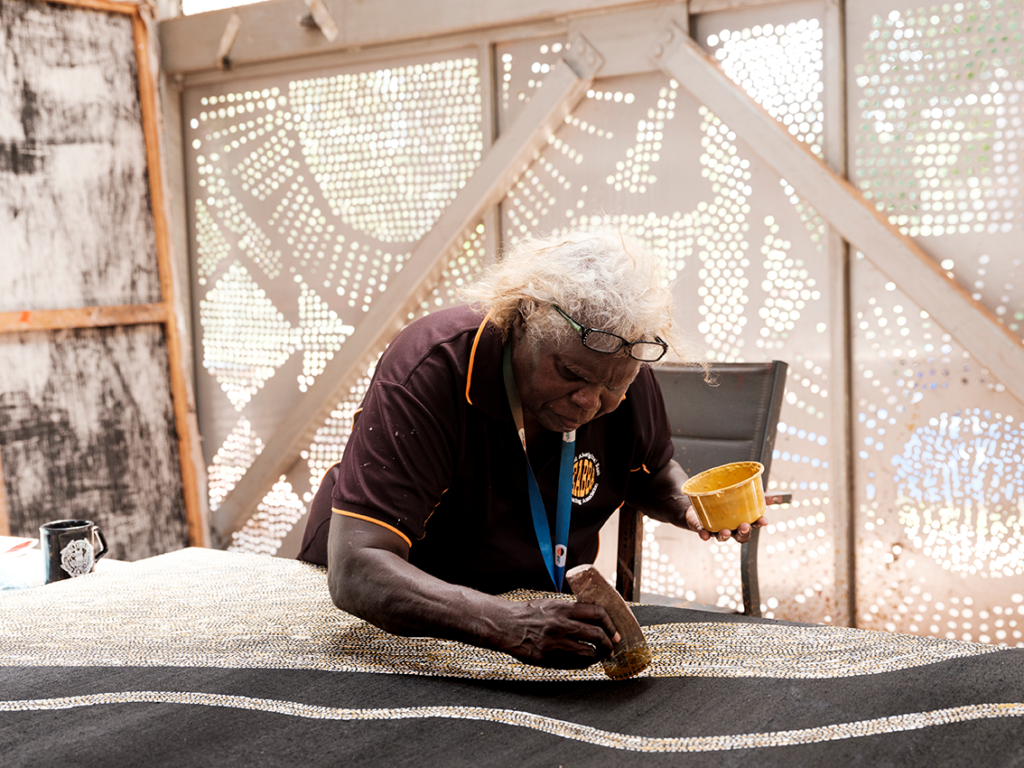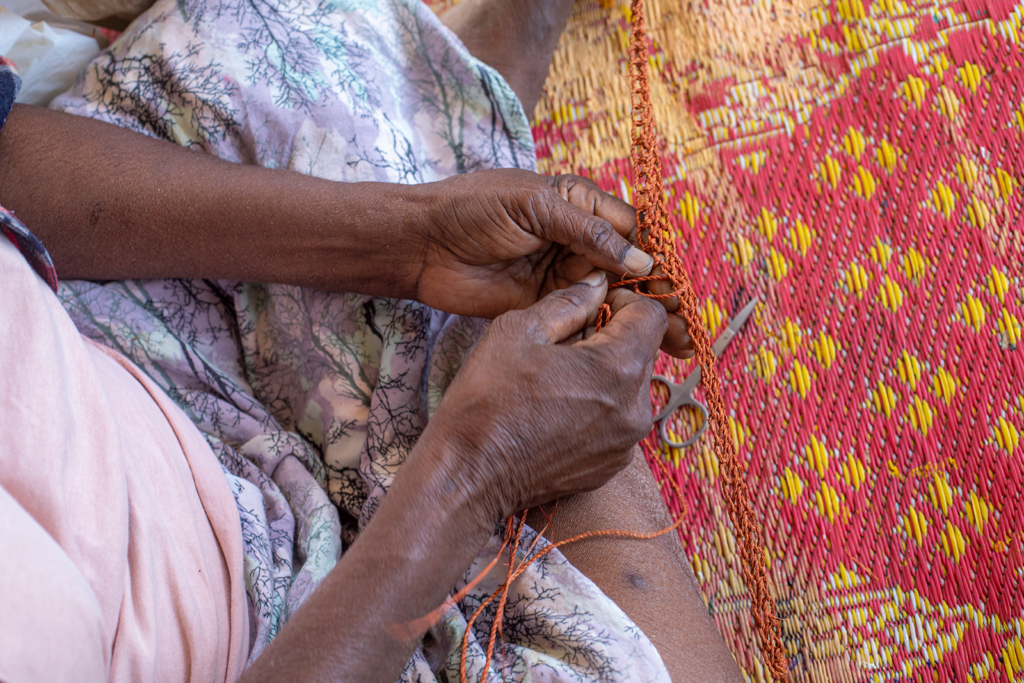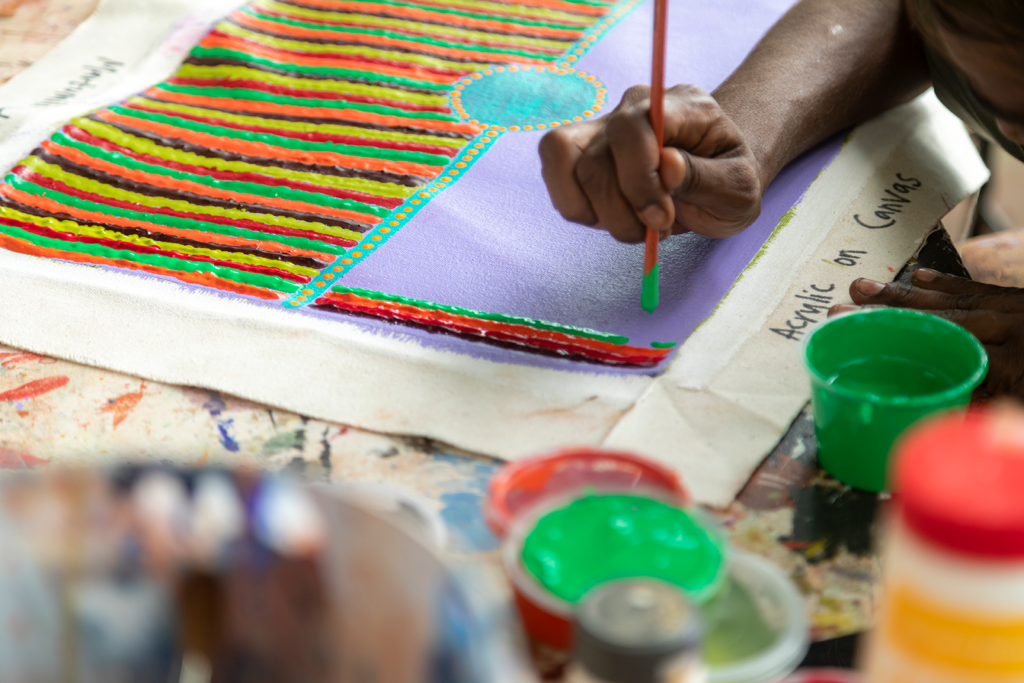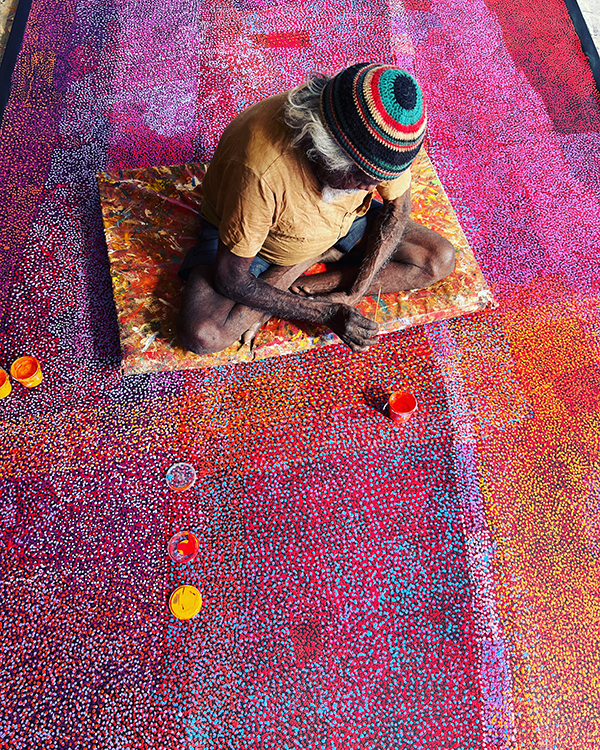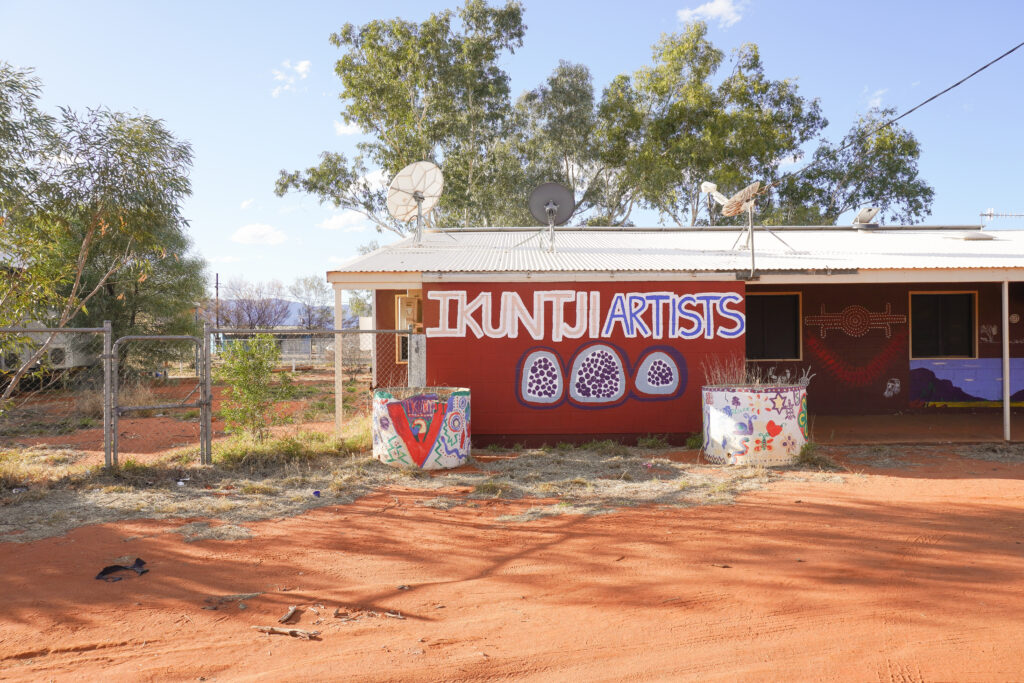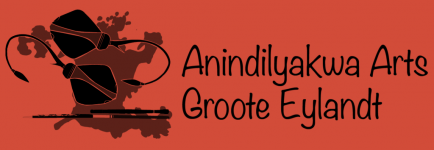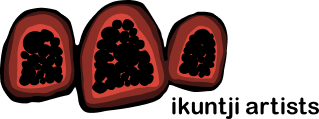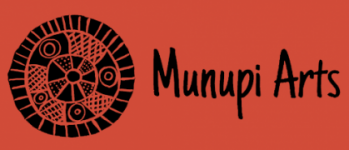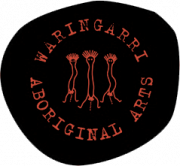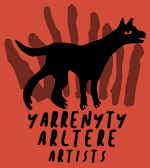Art, Culture, Country
Partnering with remote Indigenous Art Centres to deliver a landmark digital project that empowers Aboriginal and Torres Strait Islander artists to create and share unique arts and cultural experiences with the world.


Art, Culture, Country
Partnering with remote Indigenous Art Centres to deliver a landmark digital project that empowers Aboriginal and Torres Strait Islander artists to create and share unique arts and cultural experiences with the world.

Blue tac, string and cups of tea
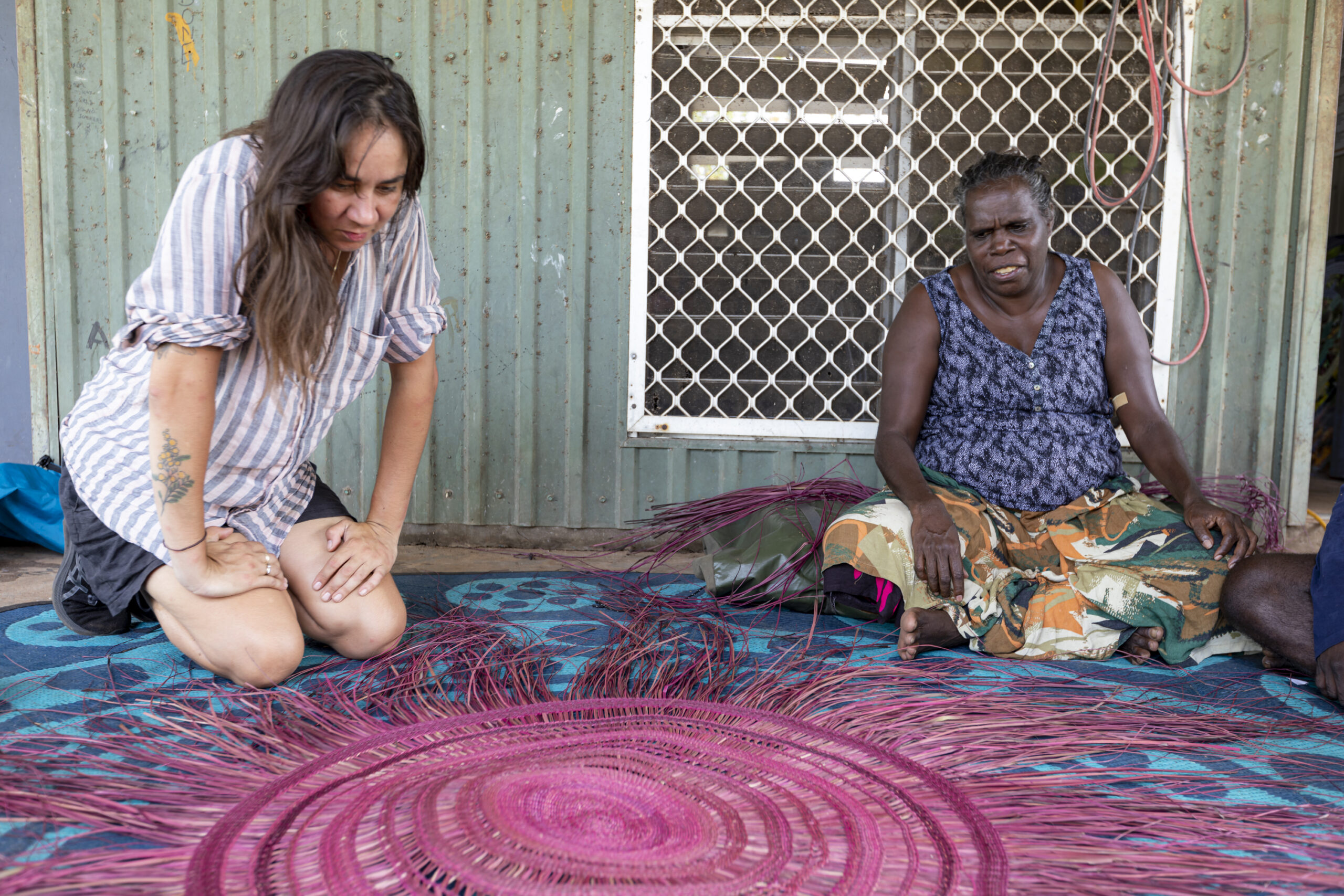
“There isn’t a more skilled set of peoples to find in rural and remote communities than those in the art centres so the easiest way to learn about anything to do with that area is to sit in the art centre- the people you seek will eventually come through those doors.”
The first art centre I went into I probably didn’t register as an art centre. I would have been too little to know the difference between a shop and an art centre. My step-dad, Stuart, used to take me on the longest drives. When we relocated from Darwin to Adelaide, we didn’t get a truck or a trailer. Stuart and I drove down several times with car loads. I would sit in the passenger seat with my skinny little legs angled up on the dashboard listening to my Spice Girls cassette tape (I got one run through of the album per day) savouring the pop tunes before it was Stuarts’ turn and Deep Purple, Pink Floyd, Yusuf Islam (Cat Stevens) or Metallica was once again the album of the hour. I liked Cat Stevens back then, not so much Metallica. That preference would reverse when I hit puberty.
I would have been so small, so skinny and curious. I would have been looking for something within my pocket money price range to take home as a souvenir. I remember the truck stops and the tourist shops in the national parks. Chicken wing-dings, dim sims, chiko rolls and Pauls Iced Coffee. Stuart would always get an iced coffee. I really liked creaming soda and sarsaparilla. Did every truck stop in the NT have a resident croc back then? Stuart would be filling up the tank with fuel, checking the tires and oil while I wandered around the shops. I always found it strange to see dot paintings at the servo, even then. Why get it here? Don’t they have uncles and aunties? Weird people. I am sure during this time of my life there were art centres, galleries and community artists shops that I walked into with Stuart. I have no evidence of this. I do have a purse made out of a toads’ bum, another out of roo testicles, beetles with legs that scurry in little carved wooden boxes, the memory of a baby mummified croc (don’t know where that one went), a collection of stones and a prevailing weakness for chicken wing-dings. Things in my price range at the time.
The next time I walked into an art centre with a dad, it was with my biological dad, Tony. I met him when I was a teenager. It was Buku Larrngay Mulka art centre in Yirrkala. He was a cop out there. Tony has close relationships with the artists there. I saw the church panels. Even at that age I was impressed by that art centre. Thought it was pretty damn cool, still do. Tony dropped me off somewhere on a beach and went to work. It was my first time staying with Tony and I was terrified. I ended up in a troopie with Yolngu women and children. The younger girl said “you are the whitest Aboriginal I have ever seen”. I felt it. When the car came to a sudden halt and the women jumped out and went to the boot, I was watching. Axes. Several axes were produced and I was pushed out of the car and into the bush. We went hunting for honey. That day I learnt about guku.
It would be another four or five years until I would be working with art centres nationally, and it started with Ku Arts (the South Australian support organisation for Aboriginal art centres and artists) and Desart (the peak arts body for Central Australian Aboriginal Arts and Crafts centres ). My job was to go in and provide basic curatorial training over a week but it rarely happened that way. It would be me, the local art centre worker(s), a deadline to hang works, an exhibition opening (or a pretend one) and a goodbye. It didn’t matter where I was, but I found that I was always the one learning the most.
I learnt to hang art with a piece of string, blue tac and a measuring tape. So that’s what I taught – with what was easily found in the studio or shed in that community. I didn’t take a tool kit, I wanted to teach using the tools they had at their disposal. Desart and I have a long love affair because of their curatorial training model. I went out plenty of times with Marlene Chisholm. I put the gig to some of my city dwelling curator colleagues but they didn’t want to get dirt on their shoes or something, so I ended up going out to deliver about 5 -7 years in a row. I wasn’t being selfish! They had trouble getting curators out there, and in return, I was SPOILT.
Marlene is a teacher and boy did she teach me. She taught me where the mission rations stations were set up, where the two ghost gums Namatjirra painted were (before some thug decided to burn them down), showed me the best woods for fire (always use gloves) and taught me about all the old people who had walked the paths she took me down. She told me stories from Santa Teresa to Tennant Creek and everywhere in between. I met and have lifelong friends from my days teaching in art centres – it was where the foundations of my curatorial knowledge was refined too.
Each art centre is its own personality. It’s the best way to get to know the community that surrounds it. The people who work in art centres are usually leaders in the community in other areas too. The ranger, the retired school teacher, the old stockman and his wife who used to run the only shop in town. The artists inside those spaces are living, breathing experts on their mob and their area. There isn’t a more skilled set of peoples to find in rural and remote communities than those in the art centres so the easiest way to learn about anything to do with that area is to sit in the art centre- the people you seek will eventually come through those doors.
Art centre seems like a silly word for the actual function. Art centre just doesn’t cut it. Art is almost a bi-product of some of these spaces. They are multi-functional hubs and are certainly the centre of the areas they service. Like that great Aunts/Uncles place that you know you can go to if life gets you down. They are economically the only source of income outside of a government job in the most rural of areas. They are the social economy of more urban spaces. They are keeping places too. I have found myself in the back room of many art centres with boxes and boxes of archives. What is in them, again, will tell you about the history of place.
I have only ever spent at most a couple of weeks at any given art centre but they are where my most precious memories and friendships were made. Art centres are where most of my learnings occurred too. Every art centre has at least one teacher/tour guide. They typically are an overly enthusiastic person who will give you the brief history that isn’t brief at all. I love the local tour guides! I didn’t really have to read too many books on Western Desert art – I just listened to the stories I was told when I visited. I didn’t have to research the history of Groote, I asked the women from Anindilyakwa Arts I met when I got there, and heard it from their mouths. I didn’t have to ask how pandanus mats were made, I was shown. Lots of things are learnt and shared that have taken me years to fully comprehend. I have kept memories of these trips, people, conversations… And I bought art everywhere I visited. My tiny one-bedroom apartment doesn’t have an inch of spare room on the walls or shelves. It’s my own art centre- the art acts as mnemonics of my life and the friends I have made.
I think the relationships I have developed by sitting on verandas across Australia with a cuppa listening to the local Elders or tour guides have meant my “work” isn’t work at all- it’s more of a service back to that community. I turn from a curator in research mode to trusted messenger just by throwing the book away and going out to the art centre. It’s a hugely different way to live life. It’s not passive, it’s active. And to me, it feels better.
I think some artists trust me in a different way because I have been a face they have seen on their veranda over the years. Why sit and read it in a book when you can sit with the people and learn with your body and not just your mind? Art centres have a spot for most skilled peoples too, you just have to find the one you can give back to. They are usually open to a skilled traveller- not many people want to leave their barrister-made city coffee and upskill locals in an art centre. I feel sorry for Australians who don’t have a relationship with a single art centre, those who are learning about Australia from books and tv shows. There is a whole other Australia that most Aussies wouldn’t have seen. I have seen and heard the most beautiful, tragic, exciting and devastating things on art centre verandas and in the studios. One day, I will stay for longer than a couple of weeks. I have to pick that time and art centre carefully though. I have a feeling that once I have more than a suitcase to unpack, I won’t leave for many years. As long as they let me play Yusuf Islam (Cat Stevens) and the Spice Girls occasionally. And I will bring my own chicken wing-dings.
Coby Ann Edgar is a Larrakia, Jingili, Anglo, Filipino, queer, cis woman from Darwin with over 10 years of experience working in government positions across education, galleries, and museums she is invested in how First Nations and non-First Nations people work together across industries, especially the arts sector.
UPLANDS is an immersive digital project that has been designed to celebrate Indigenous Art Centres and share Aboriginal and Torres Strait Islander artistic and cultural practices with the world.
This large scale immersive digital mapping project features over twenty remote Indigenous Art Centres, and interviews with over 150 Indigenous artists and arts workers from across the country.
UPLANDS is a project by Agency and has been funded by the Australian Government through the Restart to Invest, Sustain and Expand (RISE) program and the Indigenous Visual Art Industry Support (IVAIS) program.
Government Partners


Acknowledgement of Country
We acknowledge the Traditional Owners and Sovereign Custodians of the land on which we live and work. We extend our respects to their Ancestors and all First Nations peoples and Elders past, present, and future.
